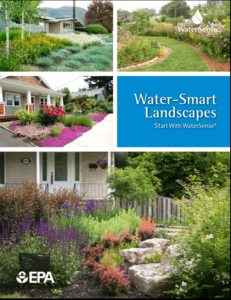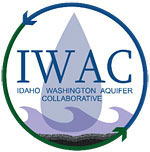 Water-Smart Landscapes Start with WaterSense
Water-Smart Landscapes Start with WaterSense
Irrigation of lawns is the single largest use of water. Outdoor water use creates peak demand on existing water supplies and system capacity during the summer months. During the summer, Kootenai and Spokane county utilities must increase supply to meet water needs, sometimes as much as three to four times the amount used during the winter. Nationwide, landscape irrigation is estimated to account for nearly one-third of all residential water use, totaling nearly 9 billion gallons per day. As much as 50 percent of water used for irrigation is wasted due to evaporation, wind, or runoff caused by inefficient irrigation methods and systems (EPA Water Sense, Water –Smart Landscapes, 2013).
Irrigation efficiency (IE) is the ratio of the amount of water consumed by the crop to the amount of water supplied through irrigation. Through education and planning, it is estimated that landscapes can be well maintained using 20-50% less water. Distribution Uniformity (DU) is a key indicator of the performance of an irrigation system. DU measures how uniformly an irrigation system applies water to the landscape. An irrigation system that is only 30% efficient requires 3.33 inches of water to keep the dry areas green, whereas, a system that is 70% efficient requires only 1.42 inches.
Currently irrigation systems across the region do not have design standards for irrigation systems. IWAC is researching developing a regional Model Efficient Irrigation Design Standard for Irrigation Systems. The purpose of this Model is to ensure efficient water use by establishing minimum design standards for landscape irrigation systems. Developing this model will aid municipalities and water purveyors to promote water use efficiency of our sole source aquifer, the Spokane Valley-Rathdrum Prairie Aquifer



